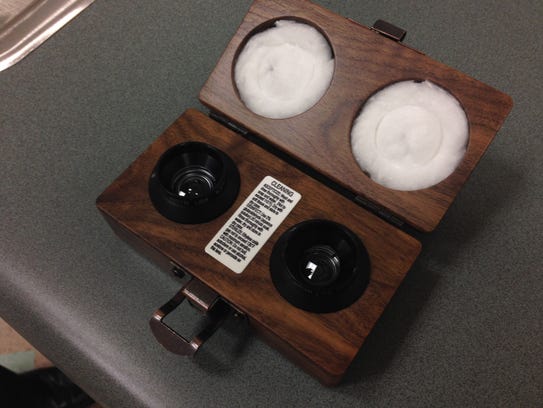Article courtesy of The Spectrum.
Author: Nichole Osinski,, nosinski@thespectrum.com
4:15p.m. MDT April 30, 2016
The annoying but relatively harmless eye floaters many people experience can now be a thing of the past thanks to a new laser procedure being performed in Southern Utah.
The Dixie Ophthalmic Specialists at Zion Eye Institute has taken the initiative to start treatment on patients who are dealing with the obstructions in their vision.
Vitreolysis, also known as floater laser treatment, is a non-invasive method of using nanosecond pulses of laser light to evaporate the vitreous opacities, or floaters, and sever the vitreous strands.
Those in their 60s and 70s are the best candidates for the procedure though floaters are common occurrences for both males and females, according to Zion Eye Institute Ophthalmologist Jayson Edwards.
“Somebody who has gone through that process where the vitreous, that jelly-like substance, has peeled off the retina and it’s more central within the center of the eye, are better candidates,” Edwards said. “You can do it before or after cataract surgery though those who have already had surgery are easier to do because there’s less of a risk.”
Specialists at the institute have been performing the procedure since the beginning of the year with the three main doctors performing about 10 to 12 procedures each.
Edwards said they have probably had about 30 to 40 patients since they first started the procedure.
The treatment has been around for several years and Edwards has seen it become popularized in states such as California and cities like Las Vegas. He said he believes the institute is the first place to offer the treatment in Washington County.

Before the laser treatment was available, floaters were only able to be removed through an invasive eye surgery to remove the vitreous gel, where the floaters are found.
The vitreous gel is 99 percent water and one percent solid elements. It’s those solid elements that coalesce and form condensations that cause floaters in a person’s line of vision, Edwards said.
“Anytime you’re inside the eye the risk is higher,” Edwards said in regards to the surgery.
The newly-available laser surgery takes between 10 to 30 minutes per session with some patients needing to return for multiple sessions if all the floaters cannot be removed.
Most patients have their insurance cover the laser procedure if they plan to have it performed at Zion Eye Institute. If someone does decide to make a cash payment for vitreolysis, it will cost them $820, Edwards said.

Once the procedure is finished, most patients will find their vision slightly blurry but will have their eyesight back to normal within a few hours.
Floaters that have been vaporized will not return though new floaters can form in different areas of the eye.
“Just about everybody is going to develop these; it’s part of the aging process and the whole degeneration of that jelly-like substance, the vitreous, that occurs to all of us,” Edwards said. “It’s just a part of being human and getting older, some develop worse, some develop hardly at all, some have floaters but don’t see them.”
Follow Nichole Osinski on Twitter, @nrosinski, and on Facebook at www.facebook.com/osinskireporter. Call her at 435-674-6231.
